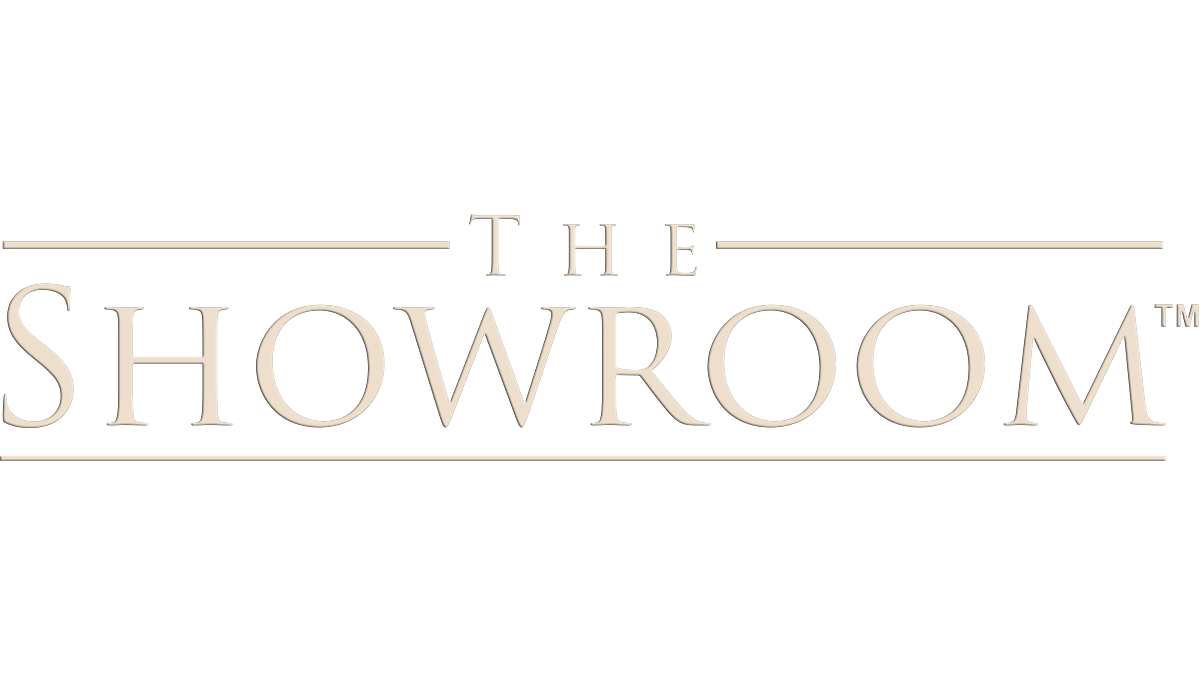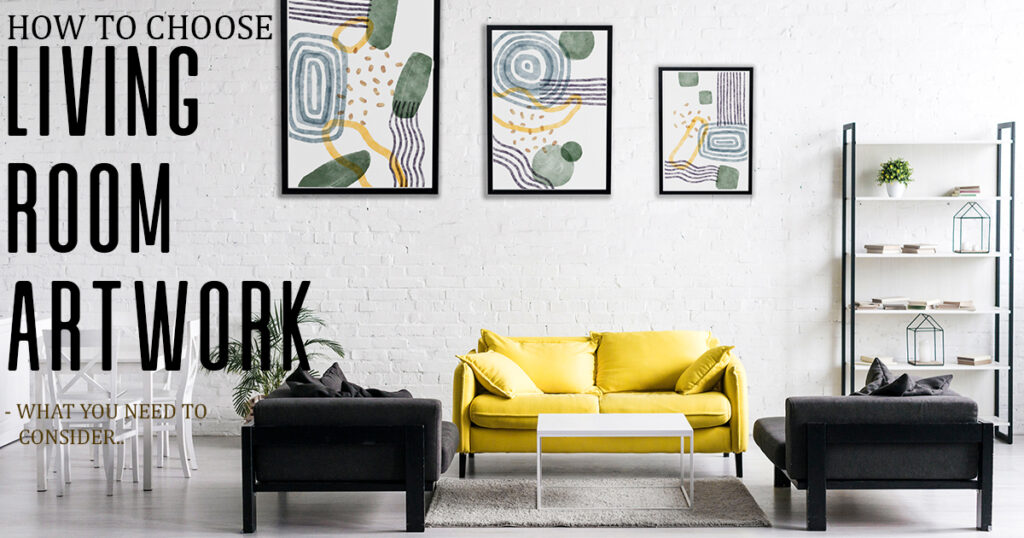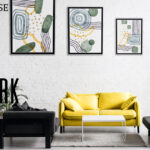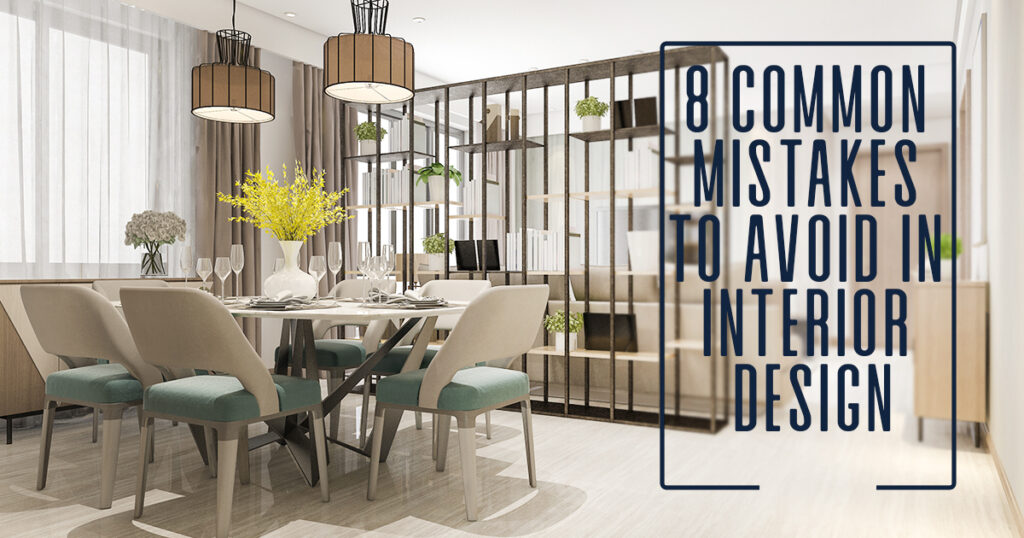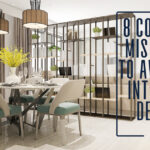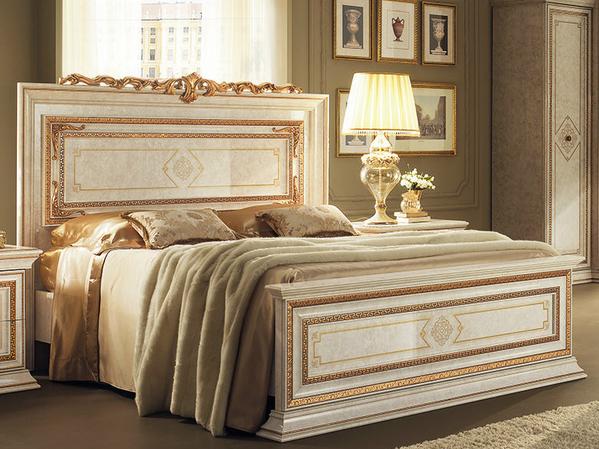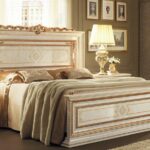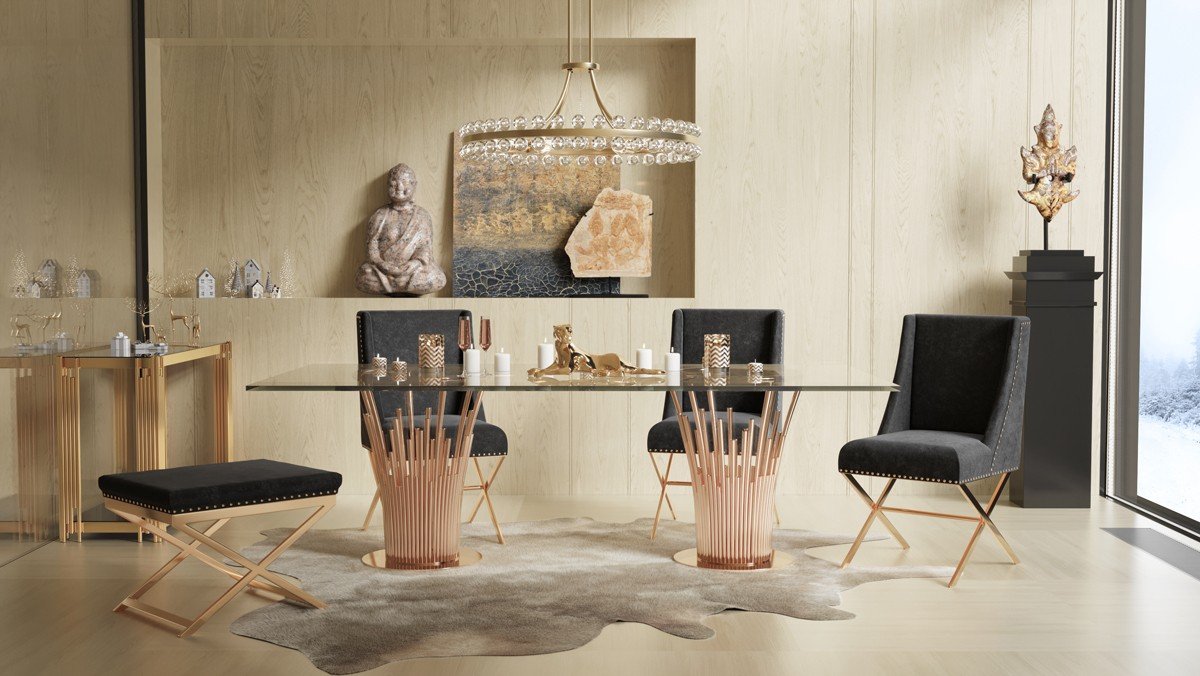
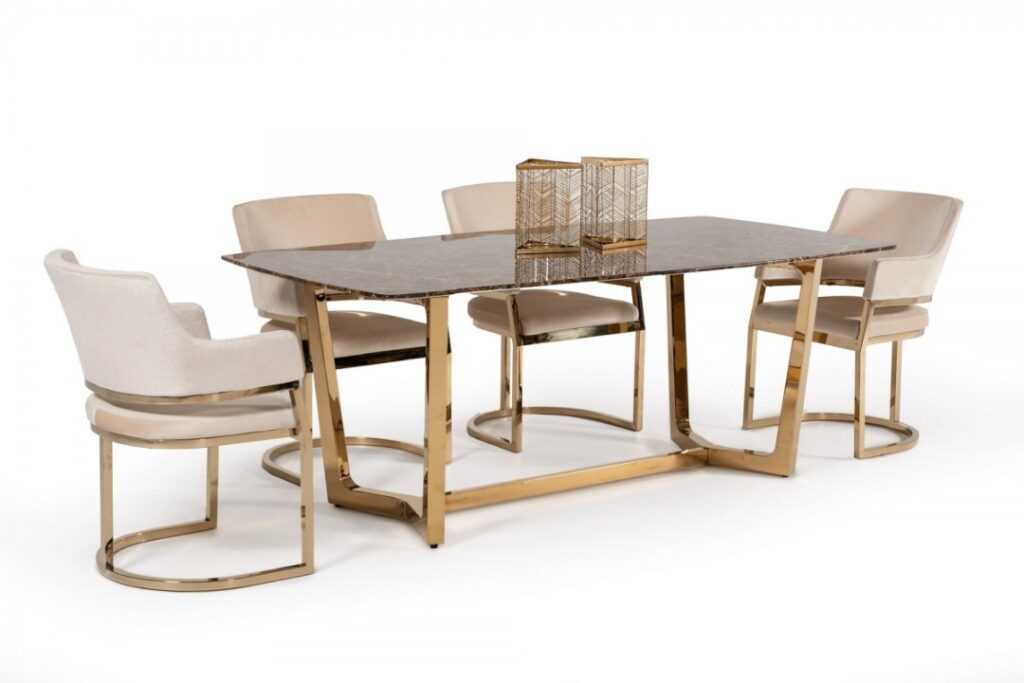
A dining room should accommodate both elegant feasts and everyday meals, reflect your home’s style, and fit your space. Figure out how to create the perfect dining room with our dining room design tips. Think beyond the table and chairs – turn to rugs, lighting, and storage to set your dining room apart from the rest.
Follow us on Instagram
Dining Room Design Elements
Consider the following design elements:
Table Shape
Table Placement
Chairs
Bar Stools
Rugs
Sideboards and Buffet Tables
Statement Lighting
Table Shape
When choosing a dining table shape, consider your room’s dimensions, how many people you’ll typically want to seat, and your entertaining style.
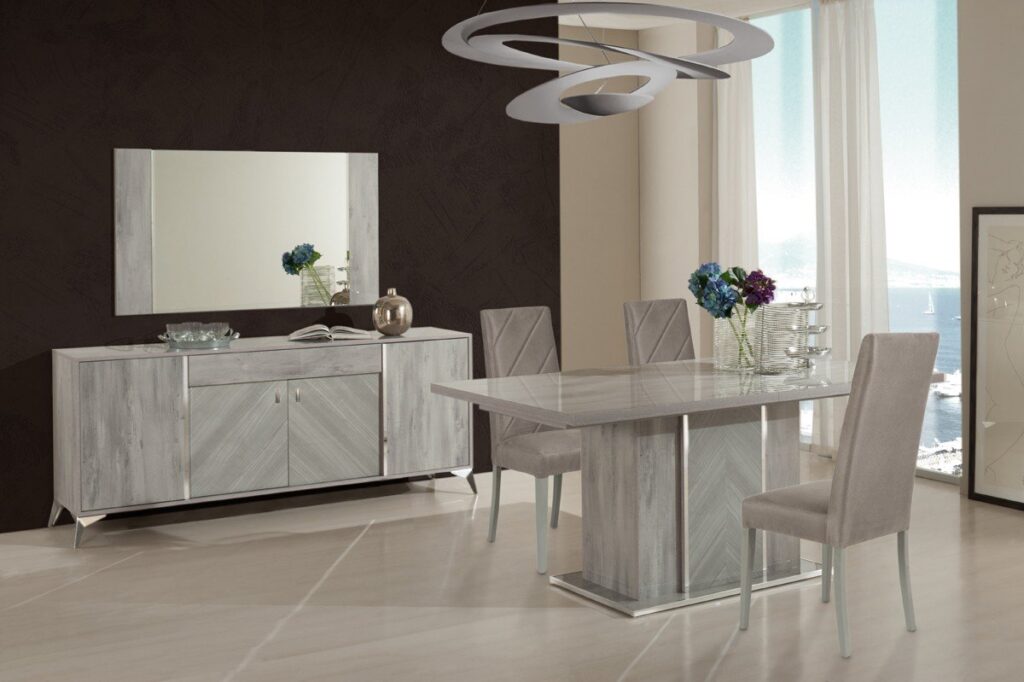
Table Placement
Your table shouldn’t disrupt the natural traffic flow of your space, so consider the main pathways and measure accordingly. Leave adequate space between the table and walls for diners to push out their chairs and still easily maneuver around other dining room furniture.
Anchor your table by centering it in front of a wall, a bank of windows, or underneath a light fixture to delineate a distinct dining area.
Chairs
When it comes to choosing a seating type, mix and match styles for a collected look, or take the guesswork out of the equation with a full dining room set. The four types of dining chairs are armchairs, side chairs, Parsons chairs, and Windsor chairs. Additionally, dining chairs should have enough clearance to fit under the table and ample elbow room for your guests.
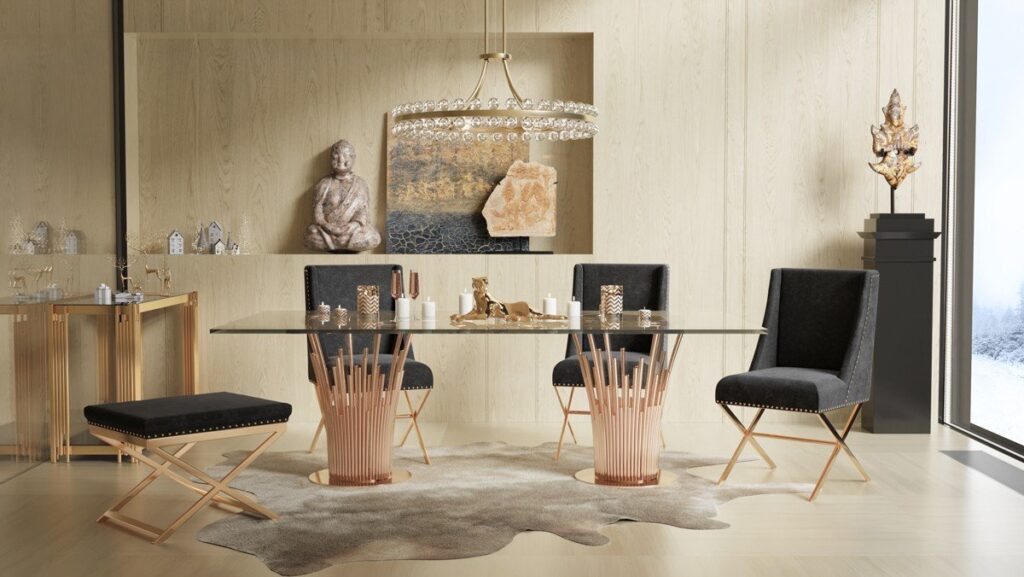
Bar Stools
Thanks to their compact silhouettes, bar stools can be used in a dining room as unconventional or space-saving alternatives to dining chairs. Bar stools can also be easier and neater to store than traditional dining chairs – backless bar stools can be tucked directly beneath your dining table so they take up absolutely no additional floor space when they aren’t in use. If you have an open-concept kitchen and dining room with a kitchen island or countertop between them, bar stools can unify both spaces while adding more seating options to your kitchen and dining.
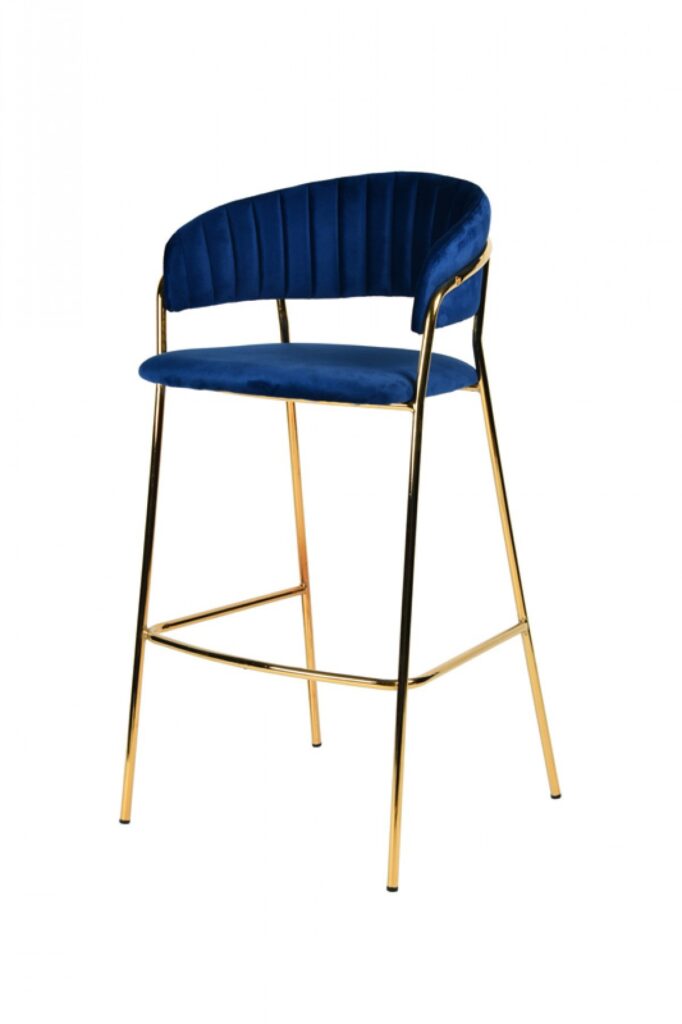
Rugs
Laying down a rug ties together your dining furniture, reinforces your style and personality, and provides comfort. If you’re worried about spills (if you have children or enjoy a glass of merlot), go for an easy-to-clean cotton or synthetic option. Stylistically, you may want to choose an intricately patterned rug to hide any crumbs or stains, but be sure that it matches any surrounding upholstery in the room and highlights the dining table set.
Your rug should be large enough that your chairs don’t catch on the edge when they are pulled back.
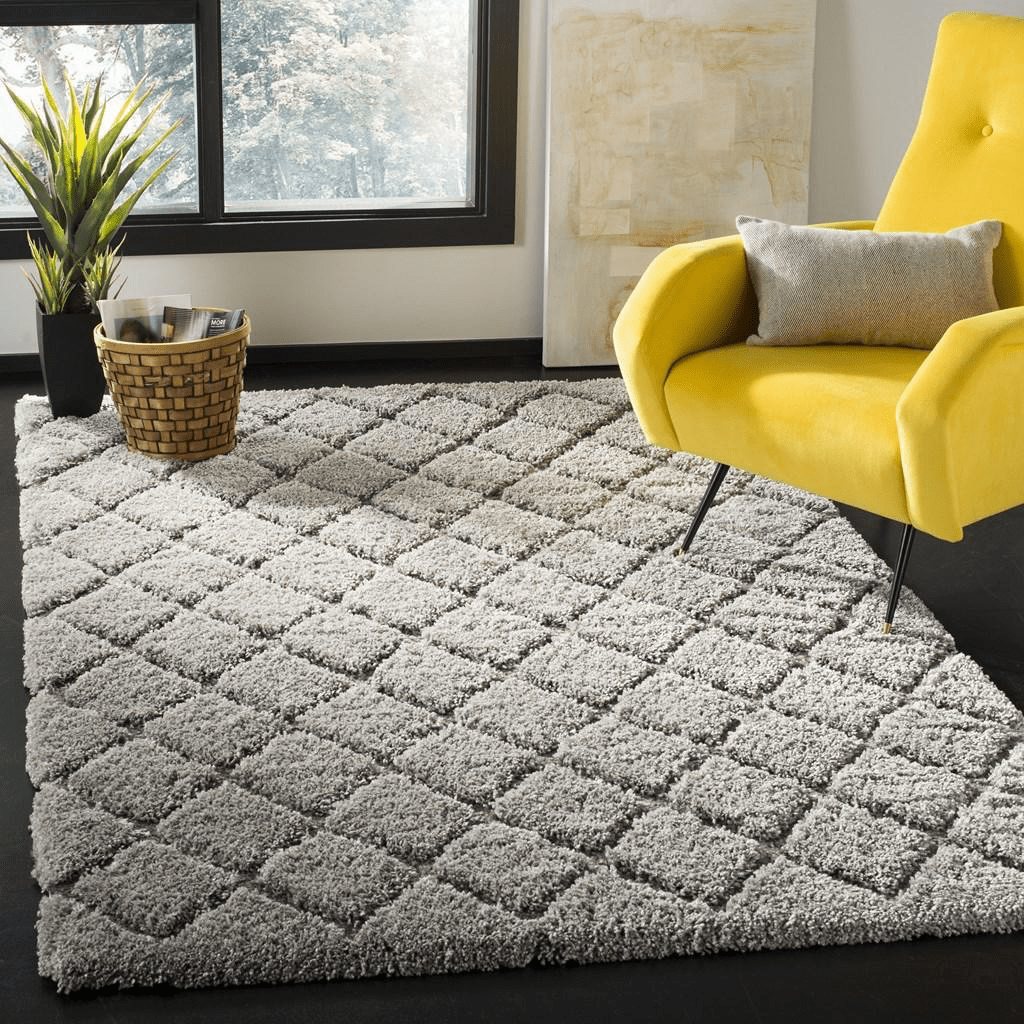
Sideboards and Buffet Tables
These double-duty pieces provide extra storage for entertaining essentials and offer a surface for serving drinks or family-style dinners. To find a style that seamlessly fits into your layout, consider how much storage space you’re looking for. Do you want drawers to hold your seasonal dinnerware or open shelves to display your fine China? Also consider wood tone – play it safe by matching the dining table set, or offset the look slightly with a complementary tone instead.
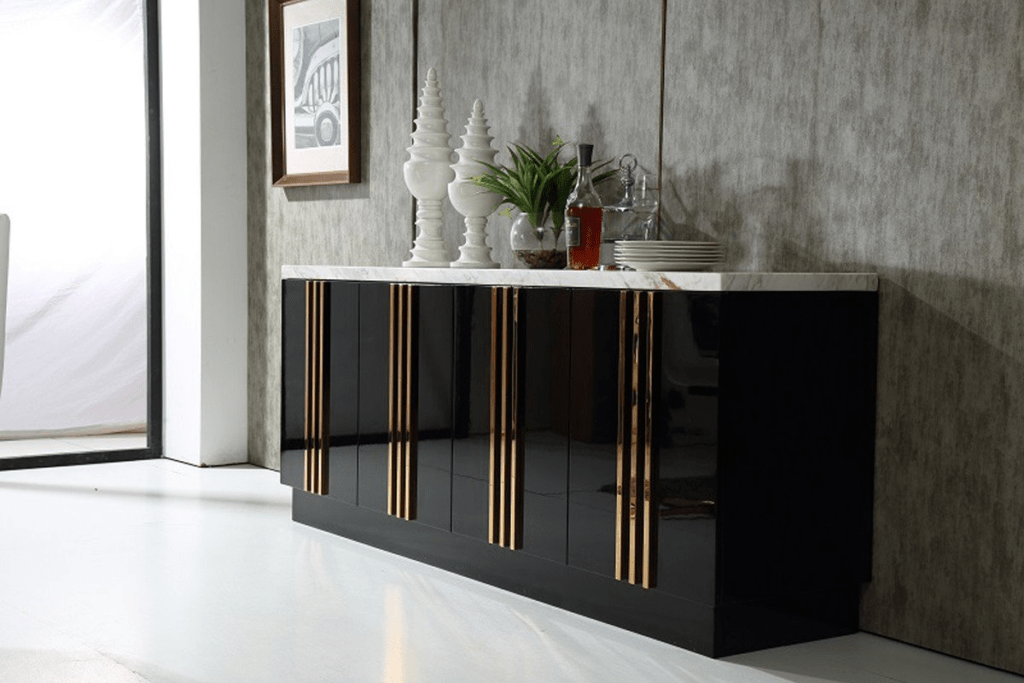
Statement Lighting
The right light fixture can become the exclamation point of any dining room and should be hung 34″ above the table to create an eye-catching focal point.
Think about the style of your home before you choose a light fixture – a graceful chandelier will look great in a formal dining room, while pendant lighting is more suitable for a modern dining. For an alternative way to employ statement lighting, layer different types of lighting, like wall sconces and flickering candles, to create an inviting atmosphere.
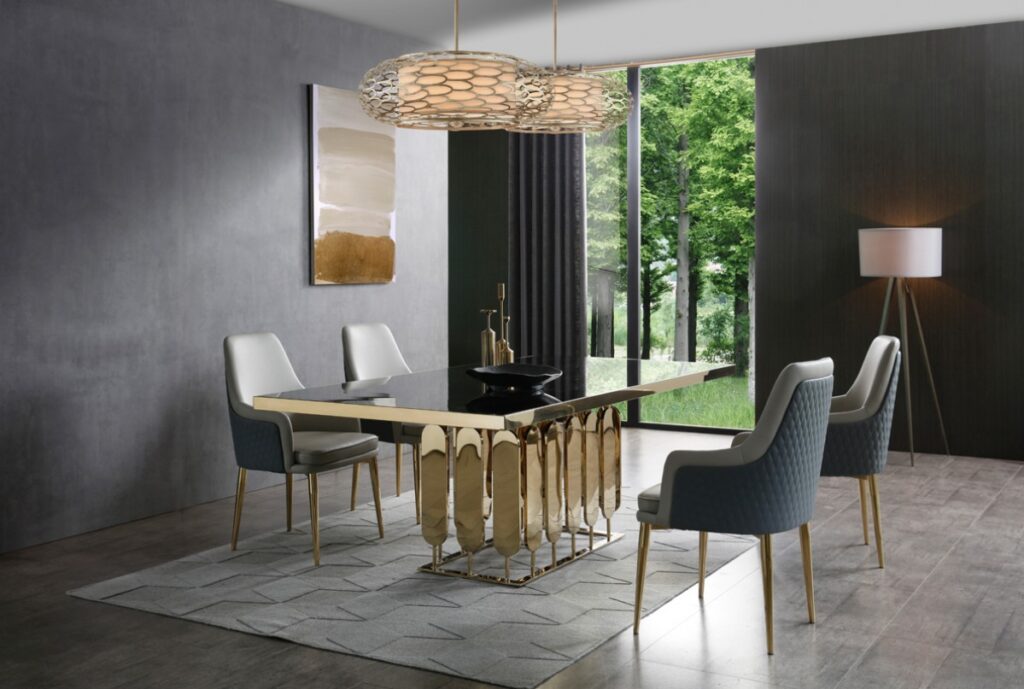
Ready to Shop? Check These Out!

